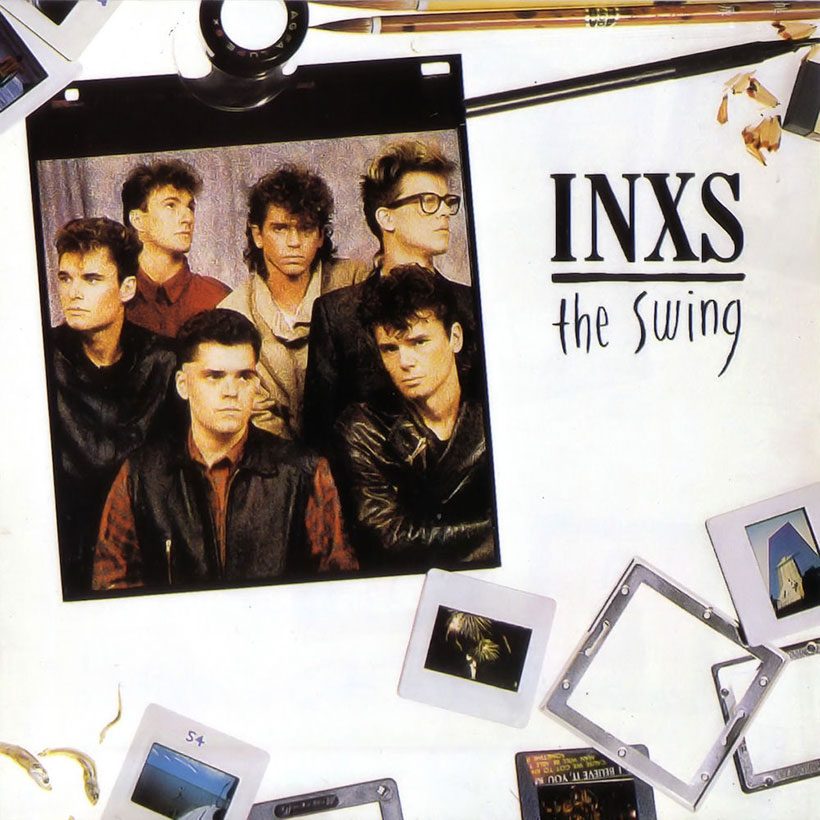‘The Swing’: When INXS Felt The Funk And Embraced The Future
Shedding their post-punk influences, INXS underwent an artistic reinvention with ‘The Swing,’ creating a breakthrough album in the process.

INXS’ fourth album, The Swing, doesn’t have the critical or commercial cachet of their career-defining Kick, yet it still stakes its claim as the most pivotal title in the band’s canon.
First released early in April 1984, The Swing provided the steadily rising Aussie outfit with their first domestic No.1, but it was the album’s artistic advances that truly set it apart from what had come before. Up to this point, INXS’ overall sound had primarily drawn upon post-punk and new wave, but as The Swing’s producer, Nick Launay, so vividly put it in the book 100 Best Australian Albums, the group’s “post-punk affectations and New Romantic plumage were now fading away, revealing a rock band with funk leanings and pop instincts.”
Listen to The Swing on Apple Music and Spotify.
“We wanted to stay true to our belief”
In retrospect, all the signs pointed to INXS achieving a major breakthrough by 1983. Long since tipped for greatness back home, they’d gigged solidly for six years and made their first foray into the US on the back of their critically acclaimed third album, 1982’s Shabooh Shoobah, which cracked the Billboard 200’s Top 50 and yielded a gold disc in the process.
The Swing’s genesis also traces back to the US, where INXS hooked up to record the album’s lead single, “Original Sin,” with Chic legend Nile Rodgers in September 1983. Having recently helmed David Bowie’s multi-platinum Let’s Dance album, Rodgers was one of the era’s hottest producers and was keen to work with INXS after an initial meeting in Canada.
“We’d asked Nile to come and see our show, as we had listened to his album The Land Of The Good Groove and he said he’d like to record with us,” keyboardist Andrew Farriss recalled for the 2017 reissue of Kick.
“Michael and I put together ‘Original Sin.’ Nile liked it and we went to [New York’s] Power Station to record. Back then, coming out of the 70s, the Chic funk era, you had Talking Heads and Blondie who were real trailblazers who stayed true to their belief – and we thought we wanted to do that, too.”
A creative reinvention
INXS’ Nile Rodgers collaboration dramatically raised the band’s profile, as “Original Sin” rewarded the group with a breakout international hit and their first Billboard Hot 100 success.
More significantly, however, “Original Sin” was a sleek, angular funk-pop hybrid that signaled a new direction for the group as they relocated to the UK to record the bulk of The Swing with Midnight Oil/Nick Cave producer Nick Launay at Virgin Records’ Manor Studio in Oxfordshire.
Taken as a whole, the album proved that INXS were well on the way to alchemizing something unique from rock, funk, and the rapidly changing trends on the dancefloor. The mammoth beats and monster grooves that provided the foundation for tracks such as “Love Is (What I Say)” and “Melting In The Sun” showed that Jon Farriss and Garry Beers had become a formidable rhythm section, while the infectious melodies and killer choruses driving “Burn For You,” “Dancing On The Jetty” and the electro-tinged “I Send A Message” proved beyond reasonable doubt that Hutchence and Andrew Farriss were fast developing into one of contemporary pop’s most accomplished songwriting teams.
Astutely described as a “reinvention” by Nick Launay, The Swing allowed INXS to get a well-deserved foot in the door of the mainstream. Building on the success of “Original Sin,” the album topped the Australian charts for five weeks and only narrowly missed out on making the Top 50 of the Billboard 200 in the US. Crucially, its Top 40 success in territories ranging from Canada to the Netherlands and France (where “Original Sin” went Top 5) also set the scene for INXS to leave a more substantial global footprint with 1985’s confident Listen Like Thieves.












